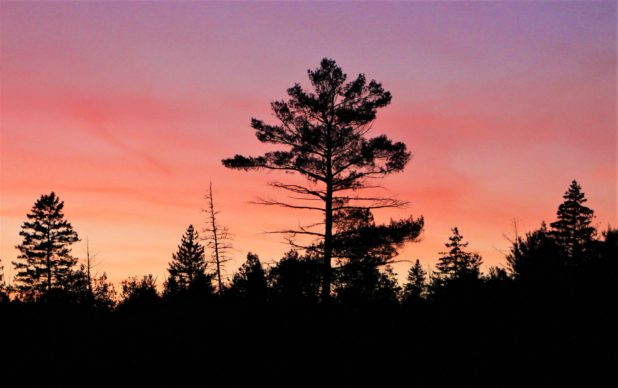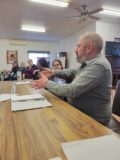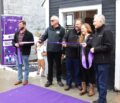Commentary
Appreciating the empty forest
November 26, 2019

Nov. 26, 2019
By Nate Smelle
There’s nothing more sacred than nature. Comprised of its elements and surviving from the atmospheric conditions it creates, without it we cease to exist.
Now that the wind has turned cold, the leaves have fallen, and the first snow has touched the ground, many of us have started spending more time indoors. Every time I find myself starting to slip into this category of the hibernating majority, I make a point of taking the time to spend a day outdoors. It always amazes me how effective this simple step outside the warmth of my comfort zone helps me to avoid the winter blues.
In many ways, I find the first winter hike of the season tends to be the best. This holds true with every season when one devotes enough time to appreciating the newness and beauty it brings.
With many birds and insects migrating to warmer climates, and many other species in North Hastings hibernating it is easy to associate winter with the silence of an empty forest. Yet, the more time one spends outdoors during the winter, the more one realizes how full an empty forest really is.
Watching the sunset from a comfortable stump beside the Bronson Marsh on Sunday, the silence I had been enjoying was suddenly interrupted by the gentle drumming of a ruffed grouse slowly weaving its way towards me through the tall grass. Tuning in to the sound which I usually associate with spring, I was reminded of the Drum Birthing Ceremony I had participated in earlier that week at the Algonquin Inodewiziwin Child and Family Centre in Maynooth. Listening in more carefully, I thought of how the centre’s coordinator Christine McRae had explained to me how the drum and drumming is meant to embody the heartbeat of Mother Earth. And, how it serves to remind us that we, like everything else in nature are interconnected. As she said “It reminds us that we are a sacred part of creation, along with the trees, plants, animals, water, stones.”
Once the drumming of the ruffed grouse had ceased, I noticed my now well-tuned ears picking up all sorts of sounds I had previously overlooked. Echoing through the trees I could hear the squawking of blue jays bantering with the cawing ravens. To my left my ears were now picking up on the frantic chatter of a squirrel gnawing away on a spruce cone. In the dogwoods behind me I now also detected the chirping of black-capped chickadees and dark-eyed juncos.
Appreciating the music, I sat there until the sun has disappeared into the treeline. Feeling recharged I walked back to my car thinking of a book recommended to me last spring by fellow birder and president of the Bancroft Field Naturalists Club, Terry Bradt. The book, Last Child in the Woods: Saving Our Children From Nature-Deficit Disorder by author Richard Louv takes a look at how children’s decreased exposure to nature in North America is harming youth and society. For Louv, time in nature is more than just leisure time; it as an essential investment in children’s health, and our own well-being.
“Unlike television,” he points out that “nature does not steal time; it amplifies it. Nature offers healing for a child living in a destructive family or neighbourhood.”
Attesting to the intrinsic value of the natural world, he adds “Progress does not have to be patented to be worthwhile. Progress can also be measured by our interactions with nature and its preservation. Can we teach children to look at a flower and see all the things it represents: beauty, the health of an ecosystem, and the potential for healing? ”
Everyone of the programs and workshops that I have attended at the Algonquin Inodewiziwin Child and Family Centre in the past year have encouraged children and their families to appreciate nature in this way. By embracing and sharing Indigenous culture; and helping others relearn how to respect and enjoy nature as McRae and her team at the centre have been teaching children and their families, we are making the kind of “essential investment” in our health and the health of our community that Louv is talking about.


















